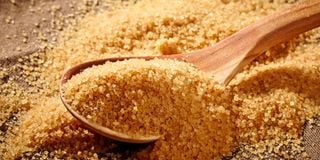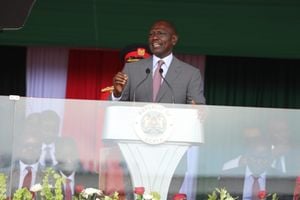Kenya sugar prices erratic as regional markets stabilise

Kenya continues to experience a sharp increase in wholesale sugar prices compared to other cities across Eastern Africa
Kenya continues to experience a sharp increase in wholesale sugar prices compared to other cities across Eastern Africa even as the regional market stabilise.
Last week’s data from the sector regulator indicated that both Nairobi and Mombasa witnessed significant changes, especially in the brown sugar market.
According to Agriculture and Food Authority (AFA), Nairobi recorded a surge of $38 per tonne with Mombasa close behind at $30 per tonne.
The upward trend raised concerns about availability and affordability of brown sugar in Kenya, which is a staple sweetener for households and industries alike.
“Nairobi recorded the highest brown sugar prices within Kenya, a situation that only deepened the country’s concerns over inflationary pressures,” stated AFA report.
Despite the rising local prices, Kenya’s import landscape did not offer much relief.
While Common Market for Eastern and Southern Africa (Comesa) brown sugar emerged as the most affordable option for imports into Kenya, the price was not competitive enough to significantly impact the local market.
The landed costs for bagged brown sugar from both Comesa Free Trade Area (FTA) and non-FTA countries remained unappealing for Kenyan buyers.
Mombasa faced import parity margins of $81 and $90 per tonne from FTA and non-FTA countries, respectively.
For Nairobi, the situation was even worse, with import costs leading to $170 per tonne. This negative margin meant that importing sugar was far from economically viable, further strengthening the position of local production in the face of these rising prices.
The price however remained stable in Tanzania, Djibouti, South Sudan and Somalia.
At the regional level, port activities of the week included the CS Sarafina, which sailed from Laem Chabang, Thailand, to Dar es Salaam to discharge 11,425 tonnes of refined sugar before proceeding to Mombasa with an additional 18,575 tonnes.
Other notable port activities included refined sugar shipments to Dar es Salaam, Somalia and Beira, Mozambique, with several vessels moored and at anchor in these ports carrying various types of sugar.
“This stability was a welcome relief for many countries in the region, which have been grappling with fluctuating commodity prices,” added AFA.
Within the East African Community (EAC), Kigali emerged as the city with the highest Very High Polarisation (VHP) sugar prices. This was largely due to restricted sugar flows from Uganda, a major supplier of VHP sugar to Rwanda.
The limited supply put upward pressure on Kigali’s prices, exacerbating the situation for businesses and consumers alike.
According to a report by Kulea, a key market observer, most sugar prices across Eastern and Southern Africa remained stable while Kenya exhibited notable fluctuations.
Brown sugar prices in the region are generally higher than in the previous quarter, reflecting increased demand and limited supply from regional sources.
Import parity however remained negative across all sources, highlighting the competitive advantage of local production in Kenya amid current market dynamics.





